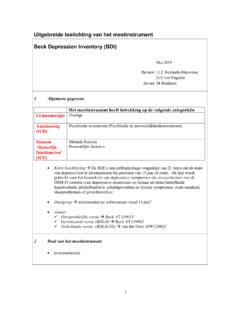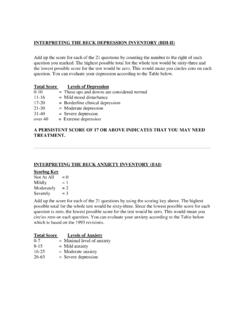Transcription of Repeated measures analysis with R
1 Repeated measures analysis with RSummary for experienced R usersThe lmer function from the lme4 package has a syntax like something like + (1|subject) to the model for the random subject get p-values, use the car the lmerTest balanced designs, Anova(dichotic, test="F") For unbalanced designs,Set contrasts on the factors like this: contrasts(Time) = (5)And BlueModel = lmer( beck ~ Time*Drug*Treatment + (1|Subject))And Anova(BlueModel, test="F", type="III")OrBlueModel = lmer( beck ~ Time*Drug*Treatment + (1|Subject), contrasts = list(Time=" ", Drug=" ", Treatment=" "))And Anova(BlueModel, test="F", type="III")# Install packages if necessary. Only need to do this once.
2 # ("lme4") # ("car") # Load packages -- do this every timelibrary(lme4) # For the lmer functionlibrary(car) # For F and Wald tests with p-valuesThe glmer function from the lme4 package has a syntax like = glmer(Hit ~ Spot*Hand + (1 | Subject), family=binomial)Anova(hoops, type="III") Page 1 of 12> # Hand-ear dichotic listening study> # Install packages if necessary. Only need to do this once.> # ("lme4") > # ("car") > # Load packages -- do this every time> library(lme4) # For lmer functionLoading required package: Matrix> library(car) # For F-tests, likelihood ratio and Wald chi-squared tests> # Read data into a data frame> dichotic = (" ~brunner/data/ ")> head(dichotic) # Look at the first few lines.
3 Subject handed ear rtime1 1 Left Left 3302 1 Left Right 3273 1 Left Both 3034 2 Left Left 2945 2 Left Right 3396 2 Left Both 315> attach(dichotic) # Make variable names available> > # Sample sizes> table(handed,ear) earhanded Both Left Right Left 20 20 20 Right 20 20 20> > # Treatment means> aggregate(rtime,by=list(ear,handed),FUN= mean) # First changes fastest x1 Both Left Left Left Right Left Both Right Left Right Right Right > > # Two-way table of means> LeftHanded = meantable[1:3,3]; RightHanded = meantable[4:6,3]> TwoWay = rbind(LeftHanded,RightHanded)> colnames(TwoWay) = c("BothEars","LeftEar","RightEar")> TwoWay> BothEars LeftEar RightEarLeftHanded > > # Marginal means> aggregate(rtime,by=list(handed),FUN=mean ) x1 Left Right > aggregate(rtime,by=list(ear),FUN=mean) x1 Both Left Right 2 of 12> # Plot the means> Means = meantable[,3] # All the rows, column 3> lhand = Means[1:3]; rhand = Means[4:6]> Ear = c(1:3,1:3)> # Invisible points at first, x axis points at 1,2,3.
4 See help(plot)> plot(Ear,Means,pch=" ",xaxp=c(1,3,2), + xlab="Ear Receiving Signal: 1=Both, 2=Left, 3=Right",+ ylab="Mean Reaction Time")> title("Reaction Time")> points(1:3,lhand,col='red',pch=15) # Red squares> points(1:3,rhand,col='blue',pch=19) # Blue circles> lines(1:3,lhand,lty=1,col='red'); lines(1:3,rhand,lty=3,col='blue')> # Annotate the plot> x1 = c( , ); y1 = c(332,332); lines(x1,y1,lty=1,col='red')> points( ,332,col='red',pch=15)> text( ,332,'Left Handed',col='red')> x2 = c( , ); y2 = c(331,331); lines(x2,y2,lty=3,col='blue')> points( ,331,col='blue',pch=19)> text( ,331,'Right Handed',col='blue')Page 3 of 12> # Naive fixed effects analysis > anova(lm(rtime ~ handed*ear)) analysis of Variance TableResponse: rtime Df Sum Sq Mean Sq F value Pr(>F) handed 1 930 ear 2 2551.
5 Handed:ear 2 615 Residuals 114 57113 ---Signif. codes: 0 ** ** * . 1> > # Repeated measures with a mixed model> dichotic = lmer(rtime ~ handed*ear + (1 | subject))> Anova(dichotic, test="F") # F tests (from car package) analysis of Deviance Table (Type II Wald F tests with Kenward-Roger df)Response: rtime F Df Pr(>F) handed 1 38 ear 2 76 *handed:ear 2 76 ---Signif. codes: 0 ** ** * . 1> > # Multiple comparisons: Which marginal means are different?> > # The combination variable HandEar will have 6 values> n = length(rtime); n[1] 120> HandEar = character(n) # A character-valued variable of length n> for(j in 1:n) HandEar[j] = paste(handed[j],ear[j],sep='')> HandEar = factor(HandEar) # Maybe would be interpreted as a factor anyway> head( (handed,ear,HandEar)) handed ear HandEar1 Left Left LeftLeft2 Left Right LeftRight3 Left Both LeftBoth4 Left Left LeftLeft5 Left Right LeftRight6 Left Both LeftBoth> table(HandEar) # Sample sizesHandEar LeftBoth LeftLeft LeftRight RightBoth RightLeft RightRight 20 20 20 20 20 20 > > # Want a table of means in a similar format.
6 > meantable # Again Ear Handed Mean RT1 Both Left Left Left Right Left Both Right Left Right Right Right > ComboMeans = meantable[,3] # All the rows, 3d column> names(ComboMeans) = sort(unique(HandEar)); ComboMeans LeftBoth LeftLeft LeftRight RightBoth RightLeft RightRight Page 4 of 12> > # For a no-intercept model on a combination variable, the regression> # coefficients are the treatment combination means. Details omitted.> > # Fit a no-intercept model> ComboModel = lmer(rtime ~ 0 + HandEar + (1 | subject))> > # Contrast matrix for testing Ear, just as a check> CM1 = rbind(c(1, -1, 0, 1, -1, 0), # Both - Left+ c(0, 1, -1, 0, 1, -1)) # Left - Right> colnames(CM1) = sort(unique(HandEar)) # Makes it easier to look at> CM1 LeftBoth LeftLeft LeftRight RightBoth RightLeft RightRight[1,] 1 -1 0 1 -1 0[2,] 0 1 -1 0 1 -1> linearHypothesis(ComboModel,CM1,test="F" ) # Compare F = hypothesis testHypothesis.
7 HandEarLeftBoth - HandEarLeftLeft + HandEarRightBoth - HandEarRightLeft = 0 HandEarLeftLeft - HandEarLeftRight + HandEarRightLeft - HandEarRightRight = 0 Model 1: restricted modelModel 2: rtime ~ 0 + HandEar + (1 | subject) Df F Pr(>F) 1 78 2 76 2 *---Signif. codes: 0 ** ** * . 1 Page 5 of 12> > # Now 3 pairwise comparisons of marginal means for ear. > # Use a Bonferroni correction, meaning compare p-value to > # divided by the number of tests: = > > bothVSleft = c(1, -1, 0, 1, -1, 0)> linearHypothesis(ComboModel,bothVSleft,t est="F") Linear hypothesis testHypothesis:HandEarLeftBoth - HandEarLeftLeft + HandEarRightBoth - HandEarRightLeft = 0 Model 1: restricted modelModel 2: rtime ~ 0 + HandEar + (1 | subject) Df F Pr(>F) 1 77 2 76 1 *---Signif.
8 Codes: 0 ** ** * . 1> bothVSright = c(1, 0, -1, 1, 0, -1)> linearHypothesis(ComboModel,bothVSright, test="F") Linear hypothesis testHypothesis:HandEarLeftBoth - HandEarLeftRight + HandEarRightBoth - HandEarRightRight = 0 Model 1: restricted modelModel 2: rtime ~ 0 + HandEar + (1 | subject) Df F Pr(>F) 1 77 2 76 1 **---Signif. codes: 0 ** ** * . 1> leftVSright = c(0, 1, -1, 0, 1, -1)> linearHypothesis(ComboModel,leftVSright, test="F") Linear hypothesis testHypothesis:HandEarLeftLeft - HandEarLeftRight + HandEarRightLeft - HandEarRightRight = 0 Model 1: restricted modelModel 2: rtime ~ 0 + HandEar + (1 | subject) Df F Pr(>F)1 77 2 76 1 > >Page 6 of 12 Baayen, Davidson and Bates (2008)> # Baayen, Davidson and Bates (2008) Data (Item is a random effect)> > # Reproduce Baayen, Davidson and Bates numbers > rm(list=ls()); options(scipen=999) # To avoid scientific notation> # Install packages if necessary.
9 Only need to do this once.> # ("lme4") > # ("car") > # ("tables") > # Load packages -- do this every time> library(lme4) # For lmer functionLoading required package: Matrix> library(car) # For F-tests, likelihood ratio and Wald chi-squared tests> library(tables) # For nice-looking tablesLoading required package: HmiscLoading required package: latticeLoading required package: survivalLoading required package: FormulaLoading required package: ggplot2 This install has not detected OpenMP support. It will work but slower in single threaded package: Hmisc The following objects are masked from package:base : , , , units> # Read data into a data frame> > rt = (" ",header=T)> rt; attach(rt)
10 Subject Item Treatment ReactionTime1 s1 w1 Long 4662 s1 w2 Long 5203 s1 w3 Long 5024 s1 w1 Short 4755 s1 w2 Short 4946 s1 w3 Short 4907 s2 w1 Long 5168 s2 w2 Long 5669 s2 w3 Long 57710 s2 w1 Short 49111 s2 w2 Short 54412 s2 w3 Short 52613 s3 w1 Long 48414 s3 w2 Long 52915 s3 w3 Long 53916 s3 w1 Short 47017 s3 w2 Short 51118 s3 w3 Short 528> table(Treatment, Item) # Sample sizes ItemTreatment w1 w2 w3 Long 3 3 3 Short 3 3 3 Page 7 of 12> > # In the tabular syntax, + means stick it together> # Row descriptions are on the left of ~> tabular(Treatment ~ ReactionTime*(mean+sd)) ReactionTime Treatment mean sd Long Short > tabular(Item ~ ReactionTime*(mean+sd)) ReactionTime Item mean sd w1 w2 w3 > > # Fit a mixed model: Treatment effect is fixed, Subject and Item are random> # and independent.


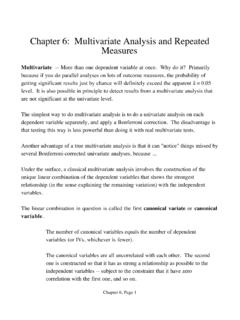

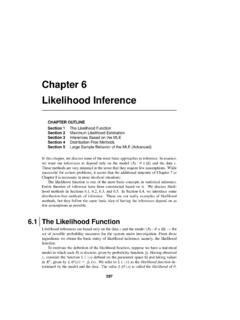
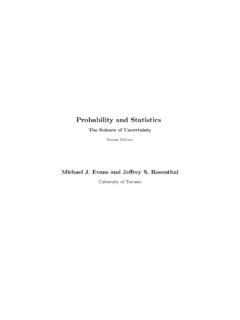
![Downloaded by [University of Toronto] at 16:20 23 May 2014 ...](/cache/preview/9/0/c/3/5/7/1/e/thumb-90c3571e5c0834844e82dee36d59b967.jpg)



